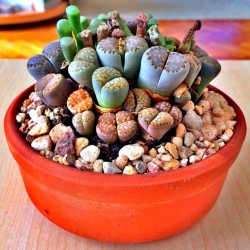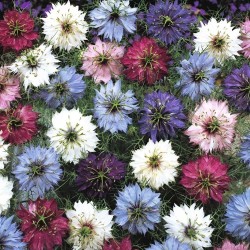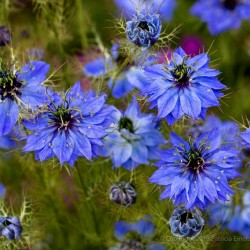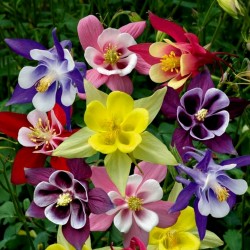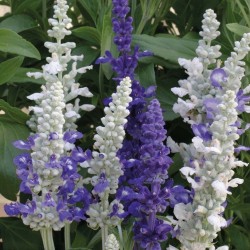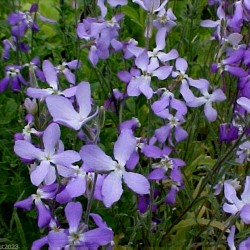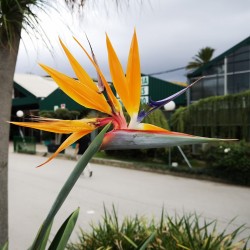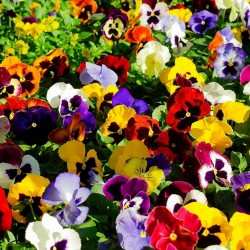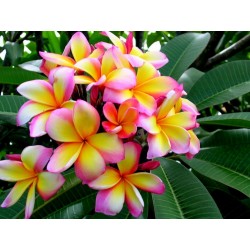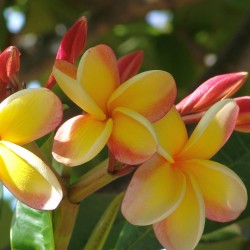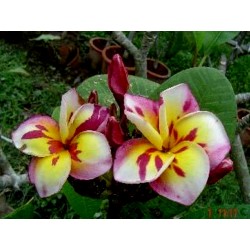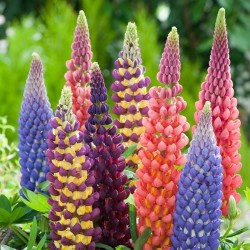
Люпи́н многоли́стный семена...
Цена
1,50 €
SKU: F 10
Seeds Gallery Com,
5/
5
<h2><strong>Люпи́н многоли́стный семена (Lupínus polyphýllus)</strong></h2>
<h2><span style="color:#ff0000;"><strong>Цена за пакет из 10 семян.</strong></span></h2>
<p><b>Люпи́н многоли́стный</b><span> </span>(лат. <span lang="la" xml:lang="la">Lupínus polyphýllus</span>) —<span> </span>вид<span> </span>травянистых<span> </span>растений из<span> </span>подрода<span> </span>Platycarpos<span> </span>рода<span> </span>Люпин<span> </span>семейства<span> </span>Бобовые.</p>
<p>В<span> </span>Евразии<span> </span>является<span> </span>инвазионным видом.</p>
<p>В первый год вегетации обычно развиваются преимущественно прикорневые, розеточные листья. На второй год образуются много стеблей. Молодые листочки, цветоносы и чашечки имеют серебристое опушение.</p>
<p>Стебли<span> </span>мощные, слабо гранёные, слабоопушённые.</p>
<p>Листья<span> </span>состоят из 9-10 почти ланцетовидных листочков, крупные, вдвое короче черешка. Листочки сверху голые или слабо опушённые, снизу опушение сильное.</p>
<p>Прилистники<span> </span>шиловидные, опушённые, обычно на 3/4 сросшиеся с черешком.</p>
<p>Соцветие<span> </span>очень длинное, обычно рыхлое.</p>
<p>Цветки<span> </span>полумутовчатые, разбросанные.</p>
<p>Губы чашечки цельные или слабо зубчатые.<span> </span>Прицветники<span> </span>рано опадающие, не превышающие чашечку. Венчик втрое длиннее чашечки, разной окраски, чаще фиолетовый.<span> </span>Лодочка<span> </span>голая.<span> </span>Цветоножки<span> </span>длинные, почти равны длине цветков.<span> </span>Бобы<span> </span>плоские, удлинённые, 9(6-7)-семянные.</p>
<p>Семена<span> </span>овальные, слабо сдавленные, коричневые, черные и другие. Вес 1000 семян 20-21 г.</p>
<p>Хромосомы<span> </span><i>2n=48</i>.</p>
<h2><span></span><span class="mw-headline">Распространение и биоразнообразие вида</span><span class="mw-editsection"><span class="mw-editsection-bracket">[</span>править<span class="mw-editsection-divider"><span> </span>|<span> </span></span>править код<span class="mw-editsection-bracket">]</span></span></h2>
<p>Распространен в<span> </span>Канаде<span> </span>(Британская Колумбия),<span> </span>США<span> </span>(Аляска, Сев.<span> </span>Калифорния, Зап.<span> </span>Орегон, Зап.<span> </span>Вашингтон).<span> </span>Интродуцирован<span> </span>в Вост. Канаду. Возделывается в странах Европы как цветочное растение. Выделены формы с разнообразной красивой окраской венчика цветка: f.<i>albus</i> — с белыми цветками; f.<i>tricolor</i> — с сине-бело-жёлтыми; f.<i>atripurpureus</i> — с тёмно-красными; f.<i>fleribunur</i> — с бледно-голубыми; f.<i>roseus</i> — с розовыми цветками (Ascherson, Graebner, 1906—1910). Во многих странах растёт в одичавшем состоянии.</p>
<h2><span></span><span class="mw-headline">Классификация</span><span class="mw-editsection"><span class="mw-editsection-bracket">[</span>править<span class="mw-editsection-divider"><span> </span>|<span> </span></span>править код<span class="mw-editsection-bracket">]</span></span></h2>
<p>Внутривидовая классификация, разработанная в Америке, описывает пять разновидностей:</p>
<ul><li><i>Lupinus polyphyllus</i><span> </span>var.<span> </span><i>burkei</i> — Внутренние северо-западные Соединенные Штаты Америки</li>
<li><i>Lupinus polyphyllus</i><span> </span>var.<span> </span><i>humicola</i> — Внутренняя западная Северная Америка</li>
<li><i>Lupinus polyphyllus</i><span> </span>var.<span> </span><i>pallidipes</i> — Западный Штаты Орегон и Вашингтон</li>
<li><i>Lupinus polyphyllus</i><span> </span>var.<span> </span><i>polyphyllus</i> — Прибрежная западная Северная Америка</li>
<li><i>Lupinus polyphyllus</i><span> </span>var.<span> </span><i>prunophilus</i> — Внутренняя западная Северная Америка</li>
</ul><h2><span></span><span class="mw-headline">Культивирование и использование</span><span class="mw-editsection"><span class="mw-editsection-bracket">[</span>править<span class="mw-editsection-divider"><span> </span>|<span> </span></span>править код<span class="mw-editsection-bracket">]</span></span></h2>
<p>Культурные сорта<span> </span><i>Lupinus polyphyllus</i><span> </span>предназначены для садового цветоводства. Были отобраны многочисленные культурные сорта, различающиеся по цвету цветка, включая красный, розовый, белый, синий, и мультиокрашены с различными цветами на различных лепестках. Часто выращиваются гибриды между<span> </span><i>L. polyphyllus</i><span> </span>и<span> </span><i>L. arboreus<span> </span></i>под названием Люпин Рассела<sup id="cite_ref-3" class="reference">[3]</sup>. Такие растения очень выносливы и неприхотливы. Иногда от них трудно избавляться в саду или огороде.</p>
<p>Очень часто встречается в одичавшем состоянии (Белоруссия, Польша, Германия, Финляндия).</p>
<p>Во многих странах, в том числе России, Белоруссии, Украине возделывается как<span> </span>сидерационное<span> </span>растение.</p>
<p>В последние годы у этого вида получены низкоалкалоидные формы, на базе которых в России (ВНИИ растениеводства им. Н. И. Вавилова) создан первый кормовой сорт этого вида люпина «<b>Первенец</b>». Оригинатор сорта — Павловская опытная станция ВИР.</p>
<p>Селекционная работа с кормовым люпином многолистным начата также в Польше, Финляндии и др. странах<sup id="cite_ref-4" class="reference">[4]</sup>. Особый интерес этот вид представляет для северных регионов, где другие виды люпина не созревают.</p>
<h2><span></span><span class="mw-headline">Меры борьбы</span><span class="mw-editsection"><span class="mw-editsection-bracket">[</span>править<span class="mw-editsection-divider"><span> </span>|<span> </span></span>править код<span class="mw-editsection-bracket">]</span></span></h2>
<p>Внедрение агрессивных чужеродных видов в настоящее время является значительной частью глобальных природных изменений и часто ведет к существенным потерям<span> </span>биологического разнообразия<span> </span>и экономической значимости экосистем, подверженных биологическим<span> </span>инвазиям<sup id="cite_ref-5" class="reference">[5]</sup>.</p>
<p>Наибольшую опасность представляет высев люпина многолетнего дорожными организациями и их субподрядчиками, а также сельскохозяйственными предприятиями. В<span> </span>Норвегии<span> </span>для защиты аборигенных видов запрещен высев<span> </span><i>L. polyphyllus</i><span> </span>по обочинам дорог. Немецкое федеральное агентство по охране природы рекомендует не высевать<span> </span><i>L. polyphyllus</i><span> </span>для закрепления и улучшения почвы возле местообитаний, представляющих интерес для сохранения биоразнообразия. В России никаких ограничений не существует.</p>
<p>В местообитаниях, плотно заселённых люпином многолетним, лучшие и самые быстрые результаты дает применение<span> </span>раундапа, однако<span> </span>гербицид<span> </span>нельзя применять в массовом масштабе ввиду его влияния и на естественные<span> </span>ценозы.</p>
<p>Правильное кошение или пастьба овец постепенно уменьшает численность вида<sup class="reference">[2]</sup>.</p>
<p>Обрезка растений, когда они цветут, часто является самым простым способом их уничтожения.<sup id="cite_ref-Iceland_6-0" class="reference">[6]</sup>.</p>
F 10





